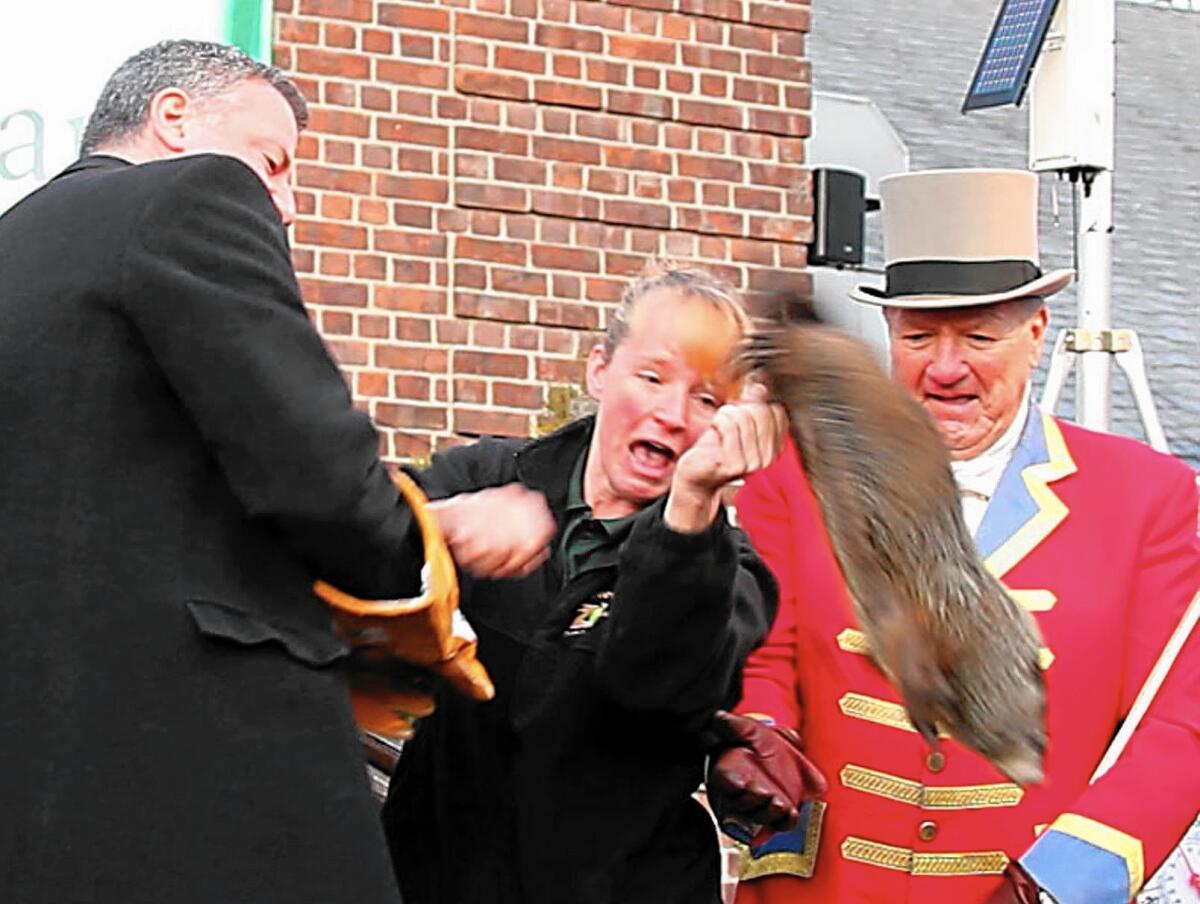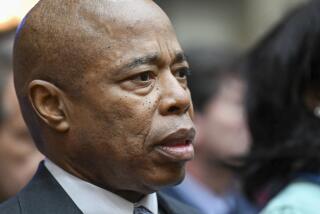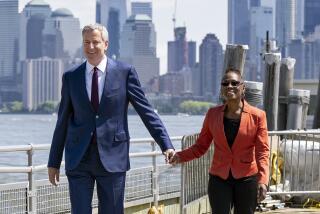New York mayor dogged by police anger, and a fumbled groundhog

If Mayor Bill de Blasio decides to go to this year’s Groundhog Day event on Monday — an appearance that has come to be expected of every New York mayor — he will have a chance at a do-over. Last year, Chuck, a groundhog from the Staten Island Zoo, slipped out of the mayor’s arms, took a tumble and a week later was found dead.
The zoo said the animal, whose real name was Charlotte, died of internal injuries never directly linked to the fall. But it was difficult to erase the appearance of a connection.
The sting of it all must still feel fresh, too, because the mayor’s office this week said it wouldn’t confirm until Sunday whether De Blasio would attend.
“That event is something I saw more people get more emotional about than all the other things De Blasio did,” said Jeanne Zaino, an Iona College political science professor who closely followed the mayor’s first year in office. “Reaction to that went on for days. It’s a groundhog.”
The groundhog incident evoked a central frustration in De Blasio’s mayoralty. On the one hand, there was De Blasio, intent on pushing progressive programs to help the poor, the disenfranchised and the shrinking middle class while carrying out civic duties such as officiating at Groundhog Day events.
On the other hand were the unscripted developments — both trivial and tragic — that are bound to come up in governing the nation’s largest city, but which moved the mayor’s focus away from the agenda he’d brought into office, and which were at the heart of some of the more bruising controversies that have dogged his administration.
Most notable of those unexpected events was the death in July of Eric Garner during an arrest in Staten Island. The aftermath further soured a problematic relationship with some rank-and-file in the New York Police Department, who saw the mayor’s scaling back of its controversial stop-and-frisk program almost as soon as he took office as a sign he did not support them.
Tensions between the mayor and the NYPD escalated in December after two officers were killed in an ambush by a mentally unstable Baltimore man who had espoused anti-police rhetoric.
Patrick J. Lynch, union chief for the Patrolmen’s Benevolent Assn., accused the mayor’s office of creating an atmosphere that endangered police officers. “There is blood on many hands,” Lynch said, adding that that included “the office of the mayor.”
“He let his relationship with the NYPD and Pat Lynch get out of control,” said Christina Greer, a political science professor at Fordham University. She said she thought the difficulties stemmed, in large part, from the mayor’s appearances after Garner’s death in which he joined with the Rev. Al Sharpton, a longtime critic of the Police Department.
Zaino said De Blasio was successful during his first year in office at implementing parts of his agenda, particularly initiatives on education and housing. “Where he has stumbled are the other things that flared up unexpectedly,” she said. “He wanted to stay very focused on his agenda, and yet the reality of life in any city” has intruded.
Relations with the Police Department frayed more when, after a grand jury did not indict an officer in Garner’s death, the mayor gave an emotional speech on Dec. 3 in which he revealed that he and his wife, Chirlane McCray, who is African American, had warned their biracial 17-year-old son, Dante, who sports a sprawling Afro, about dealings with police.
“Chirlane and I have had to talk to Dante for years about the dangers that he may face — good young man, law-abiding young man, never would think to do anything wrong, and yet because of the history that still hangs over us, the dangers he may face,” De Blasio said during the speech.
Those comments, and the killing of the two officers in Brooklyn weeks later, were what sparked that “blood” rebuke from Lynch, who also said his union’s members felt they had been “thrown under the bus.” The fracas reached its height when some police officers turned their backs on the mayor when he spoke at the funerals of the slain officers.
The controversy dominated De Blasio’s attention for weeks, yet a public opinion poll released in mid-January indicated he had perhaps not suffered as much political damage as might be expected. The Quinnipiac University poll found that 69% of the New Yorkers surveyed disapproved of the police officers’ turning their backs, and 77% found Lynch’s “blood” comment too extreme.
Greer said the poll results made her think that De Blasio might be a “rope-a-dope mayor,” referring to the boxing strategy made famous by Muhammad Ali in which a fighter endures a battery of blows, letting an opponent wear himself out, before making a move to knock him out. “You think, ‘Oh my gosh, it can’t get worse than this,’ and they come up like a phoenix,” she said.
Although De Blasio and his administration received generally good reviews for the handling of a high-profile Ebola case, other controversies that involved City Hall grabbed headlines away from the mayor’s policy initiatives.
One involved Chirlane McCray’s chief of staff. McCray and the mayor initially stood by the aide, Rachel Noerdlinger, after news media reported that she had hundreds of dollars in unpaid parking tickets and that she failed to report a boyfriend’s criminal past in a background check. She eventually resigned when the story did not die down.
Days into his second year in office, De Blasio was busy managing an unexpected natural event — a storm initially forecast to dump up to 3 feet of snow on the city, but which brought less than a foot. He found himself defending the city’s decision to ban nonemergency traffic and Gov. Andrew Cuomo’s move to shut down the subway overnight at huge inconvenience to many New Yorkers. “You can’t be a Monday morning quarterback when it comes to the weather,” De Blasio said.
Weather will again be on the mayor’s agenda when the one-year anniversary of groundhog-gate rolls around.
He was asked about the Groundhog Day ceremony after a local paper reported that the zoo will change the format this year and keep the new Chuck safely ensconced in a plexiglass container during the reveal of whether or not the city faces another six weeks of winter.
“I think reform is needed,” De Blasio joked on Jan. 7 during an unrelated news conference. “I welcome a new approach.”
More to Read
Start your day right
Sign up for Essential California for news, features and recommendations from the L.A. Times and beyond in your inbox six days a week.
You may occasionally receive promotional content from the Los Angeles Times.






